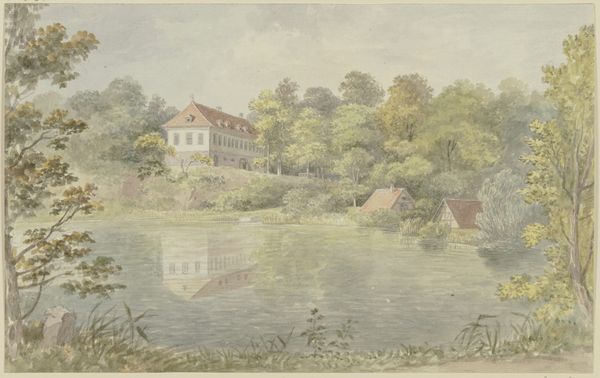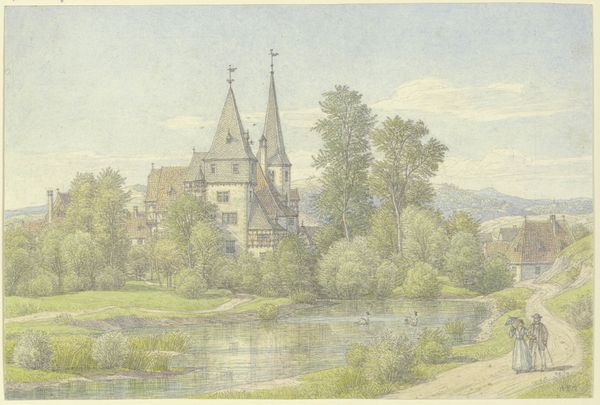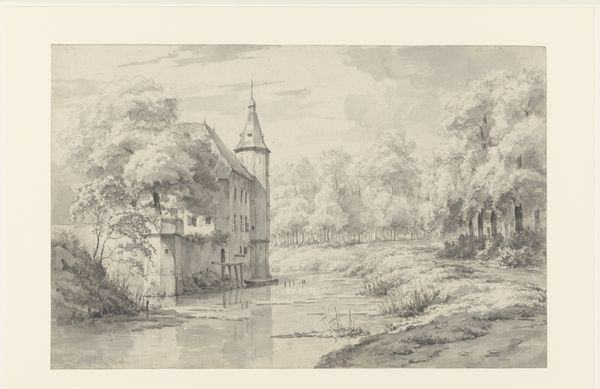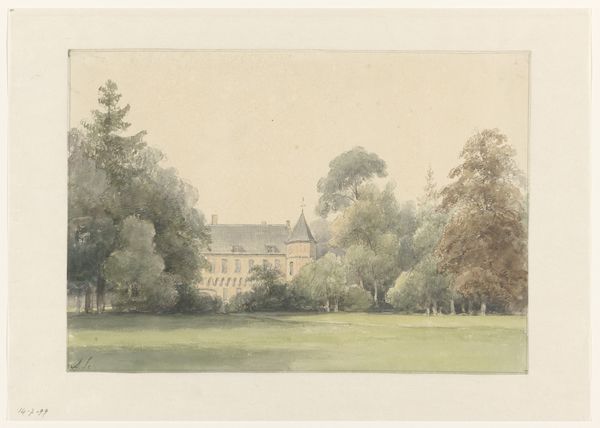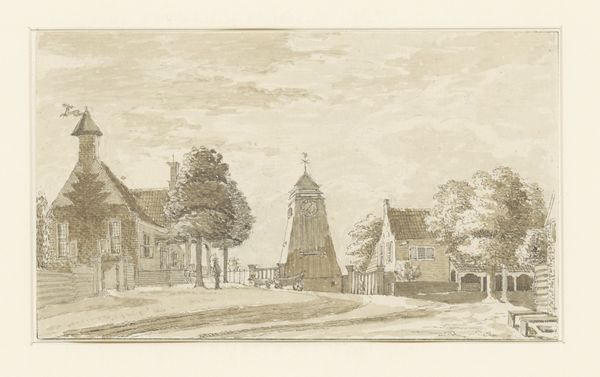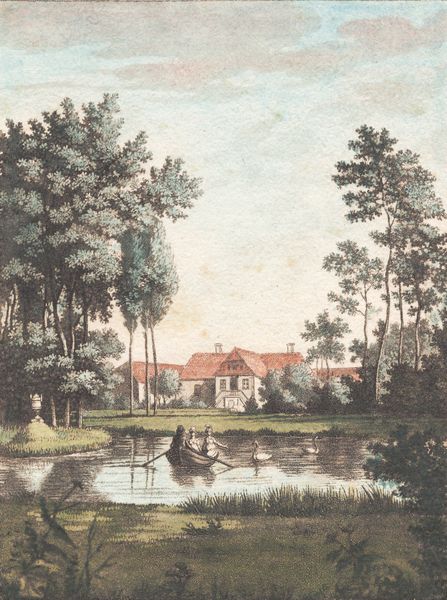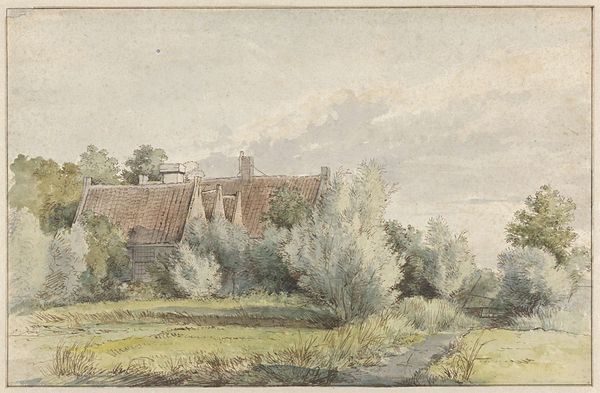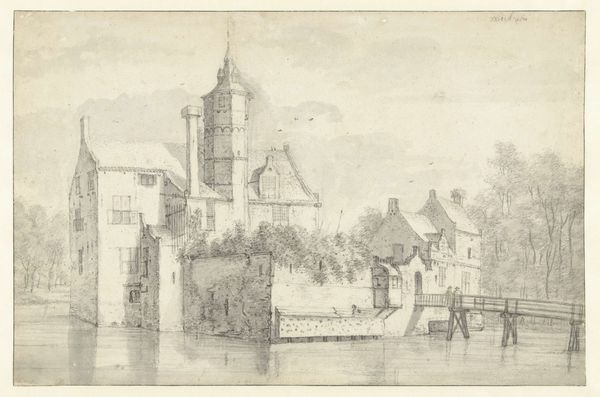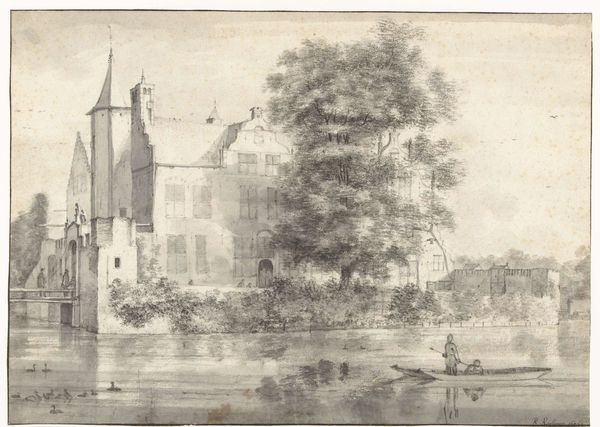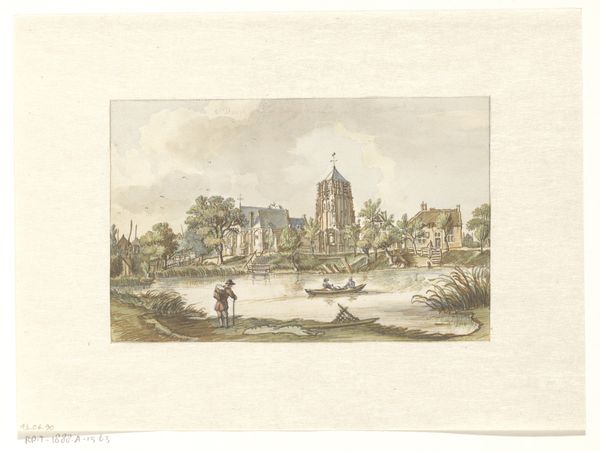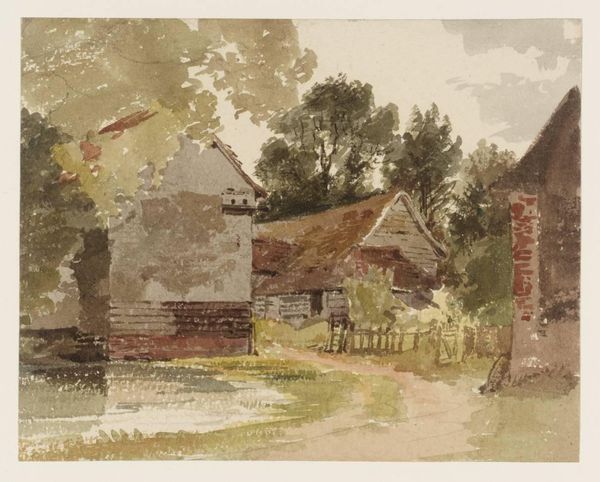
drawing, plein-air, paper, watercolor
#
landscape illustration sketch
#
drawing
#
16_19th-century
#
plein-air
#
landscape
#
figuration
#
paper
#
watercolor
#
german
#
coloured pencil
#
romanticism
#
watercolour illustration
#
watercolor
Copyright: Public Domain
Curator: The watercolour drawing "Weiher, dahinter Häuser eines Dorfes mit Kirchturm" by Karl Peter Burnitz captures a serene view. The artwork can be found here at the Städel Museum. Editor: There is such muted palette; an immediate calmness. A lone figure is standing in the bottom-left foreground, but somehow it doesn't disturb the landscape. Curator: Indeed, the artist utilizes delicate watercolour washes to delineate form and space. Note the layering, which suggests depth through subtle shifts in tonal values, almost as a masterclass in plein-air drawing. Editor: Absolutely, I cannot help but think about how the artist and this method contributed to landscape paintings in the Romantic Era; did painting, in that time, create the need for smaller intimate works instead of dramatic, large scale canvases to democratize the art of the everyday? Curator: You're right to question that: Burnitz clearly adopts techniques to democratize artistic practices, fitting into the cultural ethos of bringing art closer to the people. Editor: It seems a somewhat idealized view. Do you feel it reflects socio-political realities of 19th-century Germany, or does it rather construct a sort of rural idyll? Curator: That contrast—the artistic intention to frame or create the perception—that's interesting because I see it operating in the balanced composition; the reflected light in the water mirrored and balanced in the cloudy sky contributes to a structured composition. The brushstrokes guide the eye and invite contemplation on what feels both ordered and natural. Editor: Perhaps this reveals a wish to establish control and harmony, during a period of significant social and political change. Curator: The artist really allows us to consider that push and pull, don’t you agree? I will keep that context in mind. Editor: A lovely balance between form and function. This view encourages me to reflect on how artistic practices actively interact with the broader cultural milieu.
Comments
No comments
Be the first to comment and join the conversation on the ultimate creative platform.
